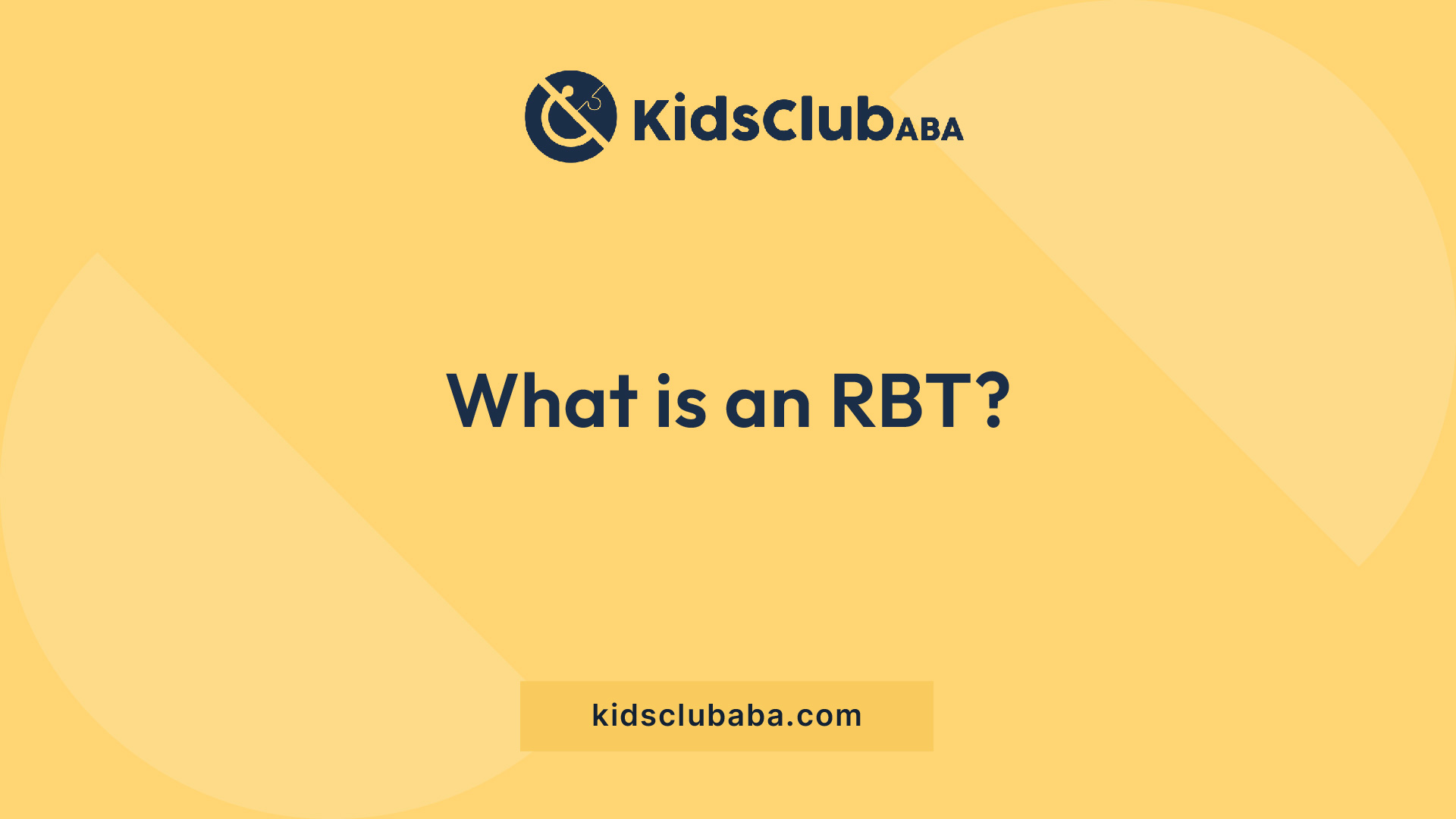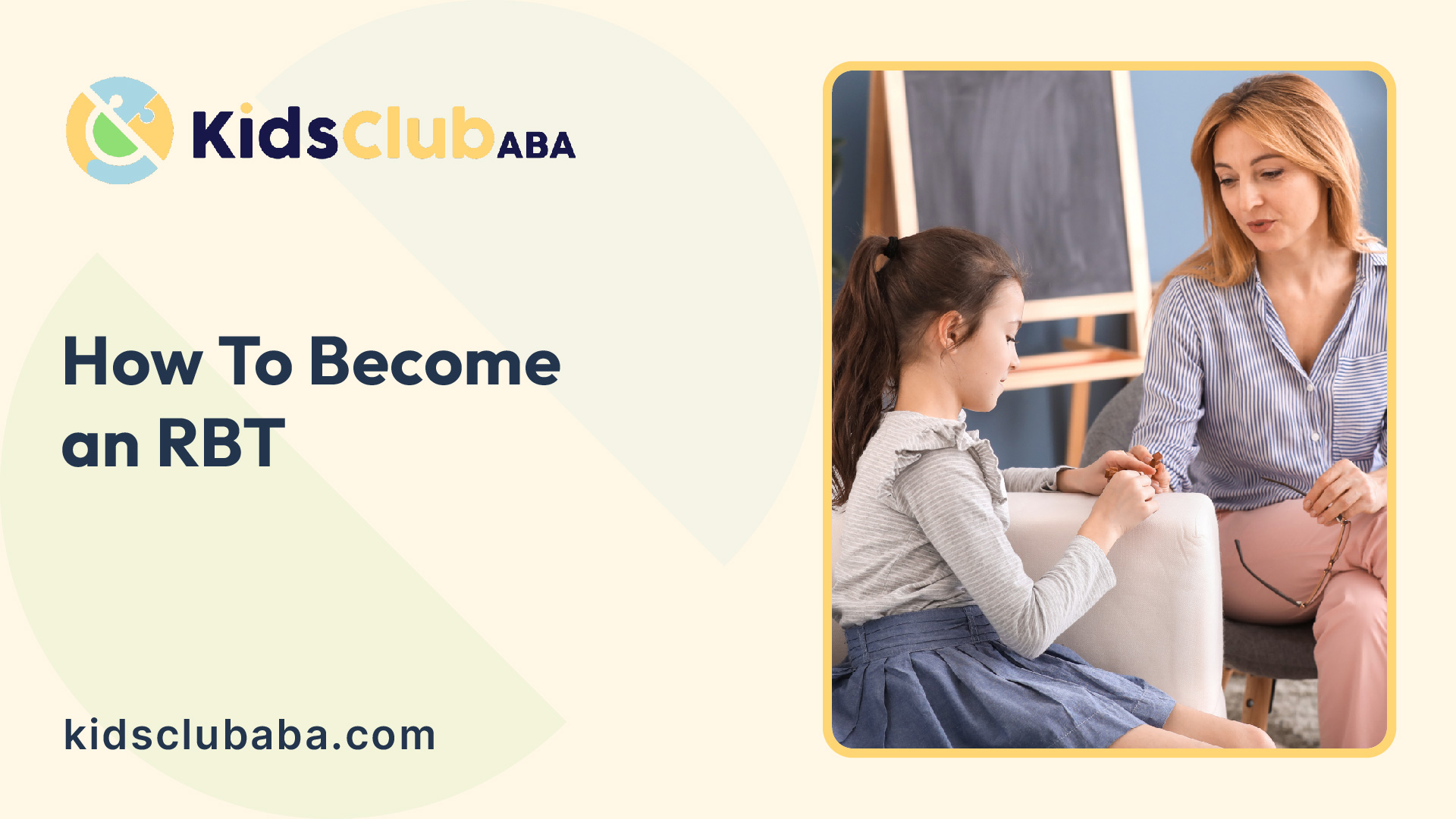How To Become an RBT: A Step-by-Step Guide to Certification
Embarking on a career as a Registered Behavior Technician (RBT) opens doors to rewarding opportunities helping individuals with autism and other developmental disabilities. Throughout this comprehensive guide, we’ll walk you through each stage of the certification process, from initial prerequisites to maintaining your professional credential.
Table of Contents
ToggleWhat is an RBT?
A Registered Behavior Technician serves as a paraprofessional who implements behavior-analytic services under the close supervision of either a Board Certified Behavior Analyst (BCBA) or Board Certified Assistant Behavior Analyst (BCaBA). In this role, RBTs work directly with clients to implement behavior reduction and skill acquisition programs, while also collecting data and assisting with various assessments.

Currently, the demand for qualified RBTs continues to grow steadily. In fact, the U.S. Bureau of Labor Statistics projects a remarkable 22% increase in related healthcare support occupations over the next decade—significantly faster than the average growth rate for all occupations.
Step 1: Meet the Prerequisites
Before diving into the certification process, you’ll need to ensure you meet these fundamental requirements:
- Age requirement: First and foremost, you must be at least 18 years old
- Education: Additionally, a high school diploma or equivalent is necessary
- Background check: Furthermore, you’ll need to pass a criminal background check
- Character: Finally, you must meet professional and ethical requirements
Unlike many healthcare professions that require extensive academic credentials, becoming an RBT doesn’t necessitate a college degree, thus making it an accessible entry point into behavioral health services.
Step 2: Complete the 40-Hour Training Program
The cornerstone of RBT preparation involves completing a 40-hour training program that thoroughly covers the RBT Task List. Fortunately, you can complete this training through several different formats:
- In-person training: Many ABA agencies and training organizations offer face-to-face instruction
- Online courses: Alternatively, self-paced or instructor-led virtual options provide flexibility
- Hybrid programs: Meanwhile, some programs combine online modules with in-person practice
- Employer-provided training: Often, ABA providers offer free training to new hires as an incentive
As part of certification requirements, the curriculum must comprehensively cover these essential content areas:
- Measurement (12% of exam content)
- Data collection methods
- Graphing techniques
- Measuring behavior accurately
- Assessment (8% of exam content)
- Preference assessments
- Assisting with functional behavior assessments
- Contributing to skill assessments
- Skill Acquisition (24% of exam content)
- Implementing teaching techniques
- Following chaining procedures
- Conducting discrete trial training
- Facilitating naturalistic teaching
- Applying prompting and fading strategies
- Behavior Reduction (16% of exam content)
- Implementing function-based interventions
- Following crisis procedures
- Applying antecedent modifications
- Documentation and Reporting (12% of exam content)
- Writing session notes
- Contributing to progress reports
- Recording objective data
- Professional Conduct and Scope of Practice (28% of exam content)
- Adhering to ethics code
- Understanding boundaries of competence
- Maintaining appropriate supervisor relationship
Finding a Training Program:
When selecting the right training program for your needs, consider these important factors:
- Is the program based on the current RBT Task List?
- Is it taught by a qualified instructor (specifically a BCBA or BCaBA)?
- Does the training include both theoretical knowledge and practical skills?
- Are there sufficient opportunities for questions and clarification?
- Does the program provide a certificate of completion recognized by the BACB?
Generally speaking, most training programs cost between $150-$500; however, many employers offer free training in exchange for a commitment to work with their organization after certification.

Step 3: Pass the RBT Competency Assessment
After successfully completing your 40-hour training, you must then demonstrate your practical skills through a competency assessment conducted by a qualified BCBA or BCaBA. During this crucial evaluation:
- You’ll need to complete it within 90 days of applying for certification
- The assessor will evaluate your ability to perform tasks from the RBT Task List
- Additionally, you must demonstrate skills with a client or through role-play
- In total, the process typically takes approximately 1-3 hours to complete
For this assessment, your evaluator will use the RBT Competency Assessment form provided by the BACB, carefully marking each skill as either “Competent” or “Not Competent.” Consequently, you must be deemed competent in all areas to proceed with certification.
Preparing for the Competency Assessment:
- First, thoroughly review the assessment form in advance
- Next, practice implementing behavioral techniques with constructive feedback
- Moreover, be prepared to demonstrate both skill acquisition and behavior reduction procedures
- Above all, understand how to collect and document data properly
Step 4: Apply for Certification
Once your training and competency assessment are complete, you’ll then apply for certification through the Behavior Analyst Certification Board (BACB) by following these steps:
- First, create an account on the BACB website
- Next, complete the RBT certification application
- Subsequently, pay the $50 application fee
- Then, submit proof of completed training and competency assessment
- Furthermore, attest to compliance with the RBT Ethics Code
- Finally, agree to ongoing supervision requirements
On average, processing takes 2-4 weeks from the time all materials are received. According to BACB reports, approximately 85% of first-time applicants are approved without requiring additional information.
Step 5: Pass the RBT Exam
The final step to certification involves passing the RBT examination, which is administered by Pearson VUE testing centers worldwide. Here’s what to expect:
- Format: The exam consists of 75 multiple-choice questions plus 10 unscored pilot questions
- Time limit: You’ll have 90 minutes to complete the assessment
- Passing score: A minimum of 35 correct answers (approximately 47%) is required
- Cost: The examination fee is $45
This comprehensive exam tests your knowledge of the entire RBT Task List, with questions distributed across the six content areas covered in your training. Notably, according to BACB data, the first-time pass rate is approximately 86%.
Exam Preparation Tips:
- Initially, use specialized RBT study guides and practice exams
- Consider forming study groups with other candidates for collaborative learning
- Additionally, create flashcards for key terms and procedures
- Meanwhile, review the Ethics Code thoroughly
- Rather than simply memorizing facts, focus on understanding core concepts
- Lastly, ensure you get a good night’s sleep before exam day
Step 6: Maintain Your Certification
After becoming certified, you must fulfill several requirements to maintain your RBT credential:
- Ongoing supervision: Receive supervision for at least 5% of the hours you spend providing behavior-analytic services each month
- Annual renewal: In addition, pay the $35 renewal fee and complete the renewal application
- RBT Requirements Maintenance Tracker: Furthermore, submit this document with your renewal
- Recertification: Moreover, complete a new competency assessment every year
- Adherence: Above all, comply with the RBT Ethics Code and BACB supervision requirements
As a result of failing to meet these requirements, your certification will become inactive.
The RBT Career Path: What Comes Next?
After establishing yourself as an RBT, several career development options become available:
- Specialization: To begin with, you might develop expertise in specific client populations or treatment approaches
- Advanced positions: Alternatively, progress to lead RBT or RBT trainer roles
- Further education: Subsequently, pursue a bachelor’s degree toward BCaBA certification
- Graduate education: Eventually, complete a master’s degree to become eligible for BCBA certification
Based on recent salary surveys, RBTs typically earn an average of $35,000-$45,000 annually, with considerable variation based on geographic location, work setting, and experience level.
Common Challenges and How to Overcome Them
Challenge 1: Finding affordable training
- Solution: First and foremost, seek employers who offer free training in exchange for a work commitment
- Alternative: Meanwhile, check with local universities with ABA programs for discounted training opportunities
Challenge 2: Scheduling the competency assessment
- Solution: Initially, network with local BCBAs through professional groups
- Alternative: Additionally, look for training programs that include the competency assessment
Challenge 3: Managing test anxiety
- Solution: To start, take multiple practice tests under timed conditions
- Alternative: Furthermore, learn relaxation techniques to use during the exam
Challenge 4: Securing ongoing supervision
- Solution: Primarily, choose employers with adequate BCBA staffing
- Alternative: If necessary, contract with independent BCBAs for supervision
Timeline: How Long Does It Take?
While individual timelines naturally vary, here’s a typical schedule to consider:
- 40-hour training: Approximately 1-4 weeks (depending on format)
- Competency assessment: 1 day (though scheduling may take 1-3 weeks)
- Application processing: Generally 2-4 weeks
- Exam scheduling and preparation: Typically 2-4 weeks
- Total time: Overall, approximately 6-15 weeks from start to finish
In most cases, candidates complete the entire process within 3 months of beginning their training.
Conclusion
Becoming an RBT undoubtedly provides an accessible entry point into the growing field of behavior analysis. By methodically following these structured steps—completing training, demonstrating competency, applying for certification, and passing the exam—you’ll earn a valuable credential that opens doors to meaningful work helping individuals with developmental disabilities achieve their potential.
Importantly, the journey doesn’t end with certification. Successful RBTs consistently engage in continuous learning, develop specialized skills, and frequently advance to higher positions within the field. Whether you ultimately view the RBT role as a stepping stone or a long-term career path, the skills and knowledge you gain will certainly serve you well in any human service profession.

